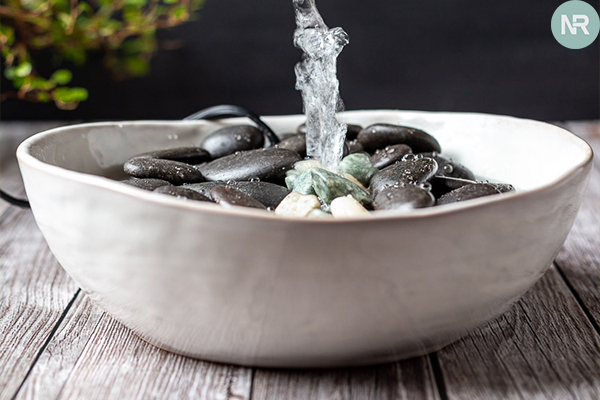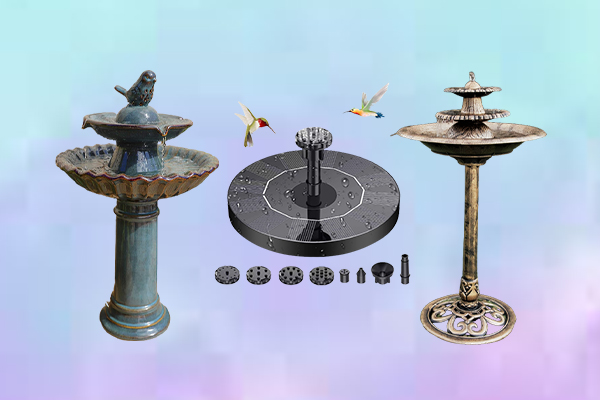Discover key water fountain maintenance rules to ensure cleanliness, durability, and smooth operation daily.
HOME >> Product Guide >> Water Fountain

Indoor fountains are a delightful addition to any space, home or office. They look very beautiful and create a lively atmosphere indoors. But, like other fixtures, indoor fountains must also be kept clean. Also, the waterfalls look beautiful and give the place peace and tranquillity! But looking at an unclean or moss-infested waterfall is just as disgusting and can ruin the quality of the entire environment. Many may wonder why fountains are so dirty, especially in yards. If the water fountain maintenance rules are known, the fountain will last long.
Since only water flows in the fountain, over time, the water also becomes dirty and can build up minerals. It is important to keep it clean, and the various chemicals used to do so. The mineral content of water, and weather, Many factors can degrade pump performance, which determines different levels of pump cleanliness. In this case, external factors such as falling leaves, strong winds, strong sunlight, and threats like rodents are not a problem since it is indoors. But, there are several challenges in keeping indoor water fountains clean.
Many people use tap water in indoor fountains. Many people do not know that using tap water for a while is not a problem. But, it can stain the fountain basin if used for a long time. Because tap water contains minerals like chlorine, lithium, and manganese mixed with the basin to form stains, dirt accumulates under the basin. So the right thing to eliminate this is to use distilled water. Although distilled water is expensive, if you want to keep the beauty of the fountain, you have no choice but to use it.
Some chemicals are sometimes used to clean water fountains, but most of the time, it is better not to use them. This chemical can damage your fountain surface, so it is best not to use them. You can use vinegar to clean the faucet, which kills germs and contains no harmful chemicals. Among the vinegar, apple cider vinegar is the best. To clean the fountains, take an amount of vinegar and spread it around the basin. After giving the vinegar, its smell will feel for some time; when the smell is gone, it should be cleaned with a brush and water. Then you can see that the fountain is as new as before. It is best to use vinegar as a water fountain maintenance rule.
People often take the fountain pump out a bit. But this is incorrect because it does not get enough water from the fountain, and the pump can burn anytime. The pump must be submerged to operate and keep the fountain clean.
Many of us know there is a possibility of damage to the fountain if it runs for a long time, but the opposite is true. If the fountain is closed for a long time, it increases the chances of the pump stalling. Also, if the pump is kept off for a long time, grime may accumulate inside it, and it will have to clean. So there is no need to keep it off for a long time.
When cleaning fountains, many forget that fountain stones need to be cleaned because water can build up dirt on them. Cleaning the stones inside the water fountain maintenance rules is the most important. For this, gravel has to be taken out while cleaning the fountain. Then everything is washed well and dried in the sun and can use again in the fountain. That way, you won’t let dirty rocks contaminate your cleaned fountain and make it messy again.
Changing the water in the fountain twice a week or at least once a week is always good. Dirt can ruin the fountain if you don’t use fresh water.
Algae are sometimes seen in indoor fountains. And when these algae escape your eyes for a few days, their levels become very high. When algae levels rise, the fountain needs to flush. Vinegar may be used for cleaning afterwards. Apple vinegar is great for this as it does not harm the fountain and makes it look brand new after cleaning it.
If you use distilled tap water, you can also use hydrogen peroxide, as this will prevent bacteria from growing in your tap water. Its biggest advantage is that if you have a pet at home and they drink the water from the fountain, it will not harm them. Because water mixed with hydrogen peroxide does not harm the animal’s body.
After cleaning the fountain, its pipes must clean first to keep it looking good for a long time. Because when dirt accumulates in the fountain, dirt also accumulates inside the pipe. So, if the pipe is not cleaned, the bacteria inside the pipe will start accumulating in the fountain. To clean the pipe, clean the inside with water and dry it in the sun. Then it is possible to keep the fountain clean for many days.
If you have pets in your home, try to keep the indoor fountain as far away from them as possible. Some animals start drinking from the water flowing from the fountain or enjoy bathing in its basin. For which you always have to take care of the fountain. So that no animals go near the house fountain, and if they do, then dirt does not accumulate in the fountain. Because when a bird bathes its feathers, a dog can also wear cat fur. So always keep the fountain clean because indoor fountains are very sensitive.
Once algae build up in the water, it becomes difficult to clean. This is easy to clean by using bleach, but remember that bleach is a type of chemical that can damage your fountain if used in excess. So, bleach should wash after use as it is harmful to pets. Dry after washing to prevent algae build-up. Bleach should not be used if the water fountain maintenance rules are well known.
Whether you are using a fountain indoors or outdoors, low water levels can damage the pump. There can be many reasons behind the loss of water content
So always check if the amount of water is reduced, and if it is reduced, then add again.
Many people use tap water instead of distilled water. But tap water is not good for fountains. Tap water can be used in outdoor fountains but should not use in small fountains because tap water contains minerals that can settle inside the pump! Large fountains can use, but it is cleaned every few days.

Top 20 Best Bird Baths -Top Picks
Read More »
A Part of Hearst Digital Media
Noarong participates in various affiliate marketing programs, which means we may get paid commissions on editorially chosen products purchased through our links to retailer sites.